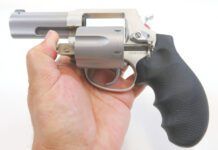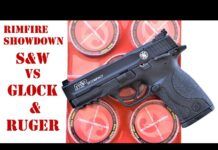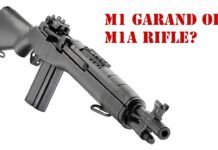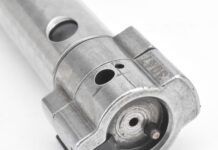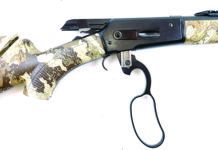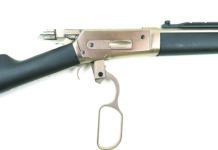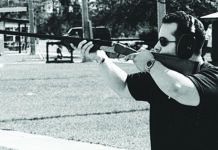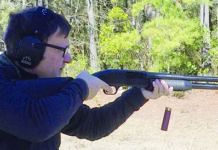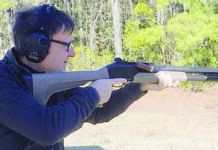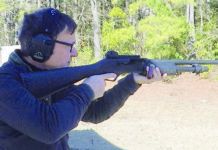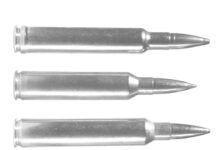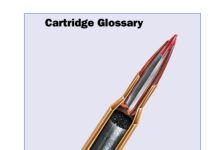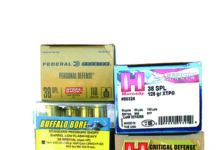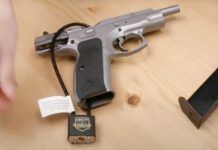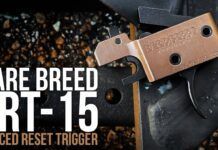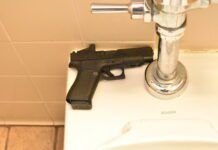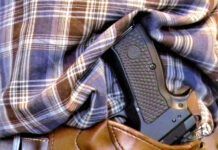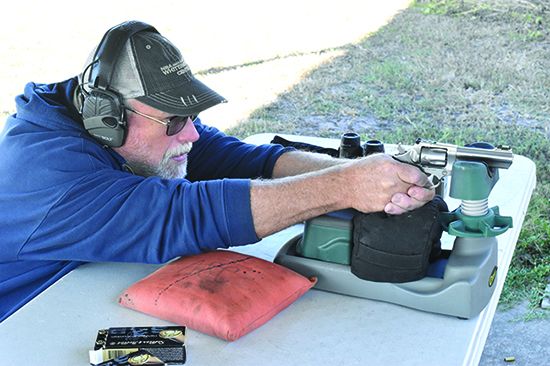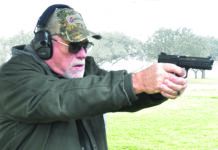Some shooters need one handgun to do everything — some self defense, some target plinking, a bit of small-animal hunting. We think that a mid-size, mid-weight, mid-price 357 Magnum revolver does a great job of filling those and other needs.
To that end, we are testing here three 357 Magnum revolvers with 4-inch barrels for overall utility. The first is the well-proven Ruger SP101 05771, $747. Made of stainless steel with a full-length underlug and a five-shot cylinder, it could be a great revolver to tote around in the woods. The second is the new Colt Viper SP4WRR, $970. Also in stainless steel with a 4.25-inch barrel, fixed sights, and nice walnut grips, the Viper sports a six-shot cylinder. Our last test piece is a Taurus Model 66 2-660049, $490. Available in blued or stainless steel, the Model 66 brings a heavy barrel, seven-round capacity, and great sights along with a very reasonable price.
To see what these wheelguns could do, we fired two 38 Special loads, Federal’s 110-grain Personal Defense rounds and Sellier & Bellot 148-grain wadcutters. To assess the top end of their power range, we also fired a 357 Magnum load, Winchester’s 158-grain jacketed hollow points. Here’s how the three revolvers performed.
Ruger SP101 05771 357 Magnum
$747
Gun Tests grade: B
We really liked the small size allowed by the five-shot cylinder. The grips did a surprisingly good job of taming recoil in this lightweight revolver.
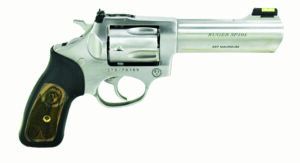
| Action Type | Revolver |
|---|---|
| Overall Length | 9.0 in. |
| Overall Height | 4.9 in. |
| Maximum Width | 1.4 in. |
| Weight Unloaded | 1.8 lbs. |
| Weight Loaded | 2.0 lbs. |
| Barrel Length | 4.2 in. |
| Barrel Material | Stainless steel |
| Frame Material | Stainless steel |
| Cylinder Material | Stainless steel |
| Grip Front Strap Height | 2.0 in. |
| Grip Back Strap Height | 3.75 in. |
| Grip Thickness (Maximum) | 1.20 in. |
| Grip Circumference | 4.75 in. |
| Capacity | 5 |
| Rear Sight | Adjustable |
| Front Sight | Green fiber optic |
| Sight Radius | 5.2 in. |
| Trigger Pull Weight (Double Action) | 11.71 lbs. |
| Trigger Pull Weight (Single Action) | 4.6 lbs. |
| Trigger Span | 2.75 in. |
| Safety | Transfer bar |
| Warranty | None written |
| Telephone | (336) 949-5200 |
| Website | Ruger.com |
| Made In | U.S. |
The 1873 Colt revolver has earned its status as one of the most iconic firearms in history until production stopped in 1941 to allow Colt to concentrate on orders needed for World War II. Firearms designer and manufacturer Bill Ruger decided that a modernized version of the Single Action Army chambered in 22 LR would be very popular and released his concept in 1953. A scaled-up version chambered in 357 Magnum, the Blackhawk, was released in 1955. Since then, Ruger has spent the intervening years designing and introducing a stream of revolvers that has established them as worthy competitors of Colt and Smith & Wesson for the wheelgun market, including the SP101 line. The SP101 was introduced in 1989, ostensibly as an alternative to the heavier GP100 series.
We’ve crossed paths with Ruger SP101s many times over the decades. They have usually been in the guise of a snub-nosed revolver sporting a 2.25- or 3-inch barrel. The 4.2-inch-barrel version tested here is the longest the company makes in the SP101 line. We thought the longer barrel might fit well in our tests as we tried to tame the recoil of 357 Magnum loads, while still using a revolver compact enough to carry easily.
Lightweight guns are going to kick more — just the laws of physics. That said, there are things that can be done to obviate some of the recoil energy. Even in firearms with reduced weight, where the weight is located can make a huge difference. The SP101 takes a standard-diameter barrel and adds a full-length underlug, moving the center of gravity to the front. As a result, the difference in muzzle flip compared to the Colt Viper was noticeable.
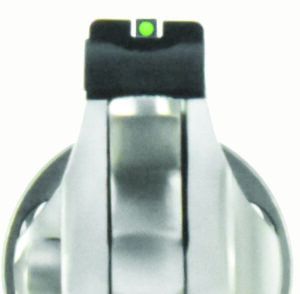
Ruger added quite a few additional features that we appreciated. The muzzle was nicely protected with a recessed crown. The top of the barrel had been milled flat and then serrated to reduce glare. We had no problem with the sight picture in bright sun. The front sight sits up on an “island” integral to the barrel. It provides a transverse dovetail for mounting the front sight, which was new to us. It uses a fixture to hold the light pipe as expected, but it isn’t a normal fiber-optic mount. The front face is serrated for glare reduction as we would hope, but the top end, containing the optic rod, is almost totally enclosed. The breech end of the light pipe is exposed, while the center section and the rear are enclosed. We can see how this would protect the front sight from damage, but we are curious about replacement when needed. The rear sight is adjustable for elevation and windage. We were very pleased with the sight picture produced by the SP101.
The frame is small to medium in size and suitable for a small revolver. Perhaps a bit large for pocket carry with the available 2.25-inch barrel, the 4.2-inch version we tested is a belt gun all the way. It is also a very trim belt gun. The cylinder contains five shots only, leaving the cylinder a smaller diameter than our other two test guns at 1.35 inches. The bolt notches in the cylinder are offset from the chamber, leaving more stainless steel around the cartridges. Cylinder release is the push-in type we would expect on a Ruger. The trigger was our preferred smooth front with rounded edges. It was also the heaviest in this test group, with a double-action pull of 11.7 pounds. Single-action pull was a little over 4.5 pounds. The smallish hammer was cross checkered, and everything was powered by a single-coil mainspring contained as a unit in the grip. This and the rest of the SP101’s design allows the subassemblies to be removed without special tools and makes for easier maintenance and upkeep.
The grip was a one-piece-rubber affair with inset wood panels. They appear to be secured by a single screw, which we have found lacking in some other small revolvers. We were very happy to find an additional stud protruding through the grip lining that mated with other holes in the rubber portion of the grips. The two methods kept the grip in place and tight throughout our shooting. Some of test shooters have larger hands, and they found the SP101 grip to offer enough real estate for only two fingers — and we were just fine with that. Add in a trigger guard that was of the correct shape and in the right place (with smooth lower edges), and we found the Ruger SP101 to be very manageable in recoil, even when using full-house 357 Magnum rounds.
The SP101 averaged smaller than 2-inch groups across three different types of ammo at 15 yards. Favorite ammo was the Federal 110-grain Personal Defense with a 1.77-inch average and a small group just over 1.25 inches. As the smallest gun in the test, it was a little slower to run, yet still comfortable to shoot. Though the contained trigger unit was eminently serviceable, we would still like to see a lighter trigger.
Our Team Said: We think this slim revolver would make an outstanding pistol to pack for a long trek in the woods. We really liked the small size afforded by the five-shot cylinder. The grips did a surprisingly good job of taming recoil in this lightweight revolver.
| 38 SPECIAL/357 MAGNUM RANGE DATA | |||
|---|---|---|---|
| Federal Personal Defense 38 Special 110-grain JHP | Colt Viper | Ruger SP101 | Taurus Model 66 |
| Average Velocity | 1009 fps | 912 fps | 929 fps |
| Muzzle Energy | 249 ft.-lbs. | 203 ft.-lbs. | 211 ft.-lbs. |
| Average Group | 1.80 in. | 1.27 in. | 0.93 in. |
| Best Group | 1.99 in. | 1.77 in. | 1.01 in. |
| Sellier & Bellot 38 Special 148-grain WC | Colt Viper | Ruger SP101 | Taurus Model 66 |
| Average Velocity | 684 fps | 617 fps | 644 fps |
| Muzzle Energy | 154 ft.-lbs. | 125 ft.-lbs. | 136 ft.-lbs. |
| Average Group | 0.76 in. | 1.72 in. | 1.28 in. |
| Best Group | 1.43 in. | 2.08 in. | 1.34 in. |
| Winchester Super-X 357 Magnum 158-grain JSP | Colt Viper | Ruger SP101 | Taurus Model 66 |
| Average Velocity | 1211 fps | 1137 fps | 1182 fps |
| Muzzle Energy | 514 ft.-lbs. | 454 ft.-lbs. | 490 ft lbs |
| Average Group | 1.51 in. | 1.67 in. | 1.28 in. |
| Best Group | 1.66 in. | 1.85 in. | 1.42 in. |
We tested at American Shooting Centers (AmericanShootingCenter.com) in Houston. We fired multiple five-shot groups at 15 yards. These revolvers were well-sandbagged in a Caldwell Pistolero Shooting Rest from Midway USA, No. 517357, $28, assisted by a Mini DRC Fortune Cookie from Wiebad.com (MINIFC, $75). We also fired additional one- and three-shot strings offhand to test for ease of handling and accuracy at full speed. We used a Garmin Xero C1 Pro ($599) to collect velocities. We used a CED7000 shot timer to collect elapsed times.
| DRILL NO. 1 DATA | |
|---|---|
| Pistol | Single Shot Average Time |
| Colt Viper | 0.85 |
| Ruger SP101 | 0.9 |
| Taurus Model 66 | 0.72 |
Process: Fire one shot from low ready at 3-by-5-inch card placed at 15 yards. Times in seconds are averages for five repetitions.
| DRILL NO. 2 DATA | |||
|---|---|---|---|
| Pistol | 1st Shot | Split Average | Total Time |
| Colt Viper | 0.85 | 0.294 | 1.44 |
| Ruger SP101 | 0.9 | 0.35 | 1.64 |
| Taurus Model 66 | 0.783 | 0.288 | 1.36 |
Process: Fire three shots from low ready at 3-by-5-inch card placed at 8 yards using 38 Special ammo. Times in seconds are averages for three repetitions.
| DRILL NO. 3 DATA | |||
|---|---|---|---|
| Pistol | 1st Shot | Split Average | Total Time |
| Colt Viper | 0.823 | 0.532 | 1.887 |
| Ruger SP101 | 0.87 | 0.508 | 1.887 |
| Taurus Model 66 | 0.753 | 0.318 | 1.118 |
Process: Fire three shots from low ready at 3-by-5-inch card placed at 8 yards using 357 Magnum ammo. Times in seconds are averages for three repetitions.
Written and photographed by Joe Woolley, using evaluations from Gun Tests Team members. GT


